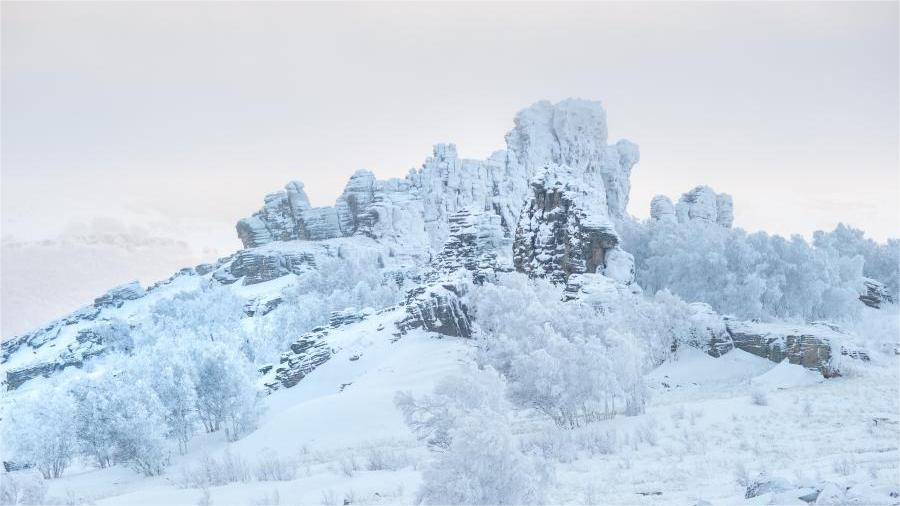Beijing's Hong'en Temple opens to public
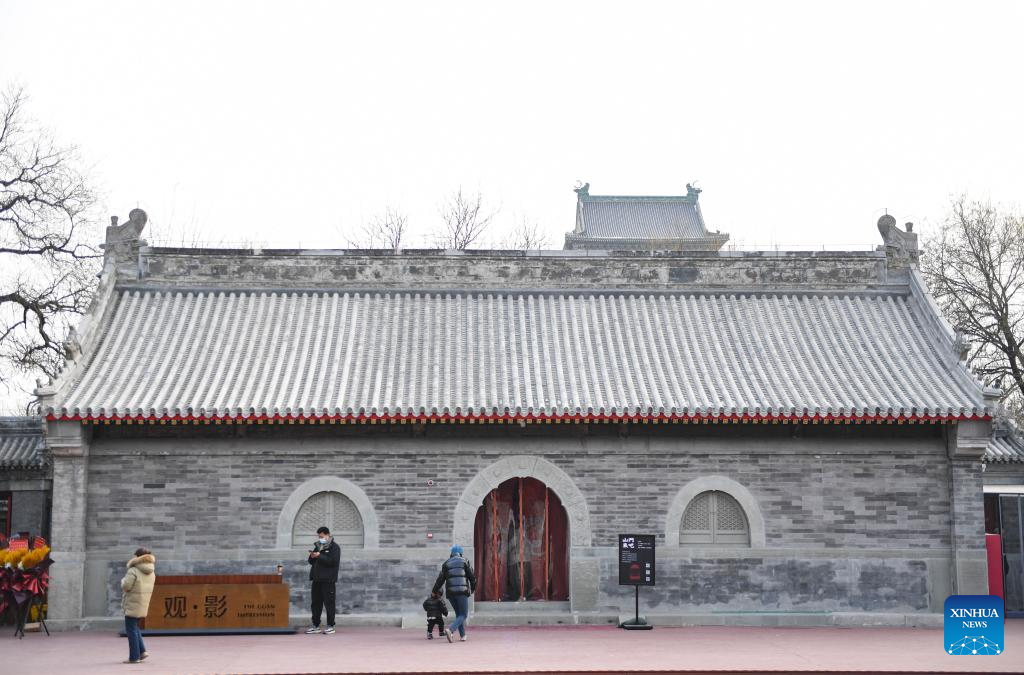
This photo taken on Jan. 18, 2024 shows a view of the Hong'en Temple in Beijing, capital of China. The over 700-year-old Hong'en Temple opened to public recently. It is located to the north of the Bell Tower in Beijing, with Beijing Central Axis passing through its west annex hall.
First created in the Yuan Dynasty (1271-1368), the Beijing Central Axis, or Zhongzhouxian, stretches 7.8 kilometers between the Yongding Gate in the south of the city and the Drum Tower and Bell Tower in the north. Most of the major old-city buildings of Beijing sit along this axis. (Xinhua/Chen Zhonghao)
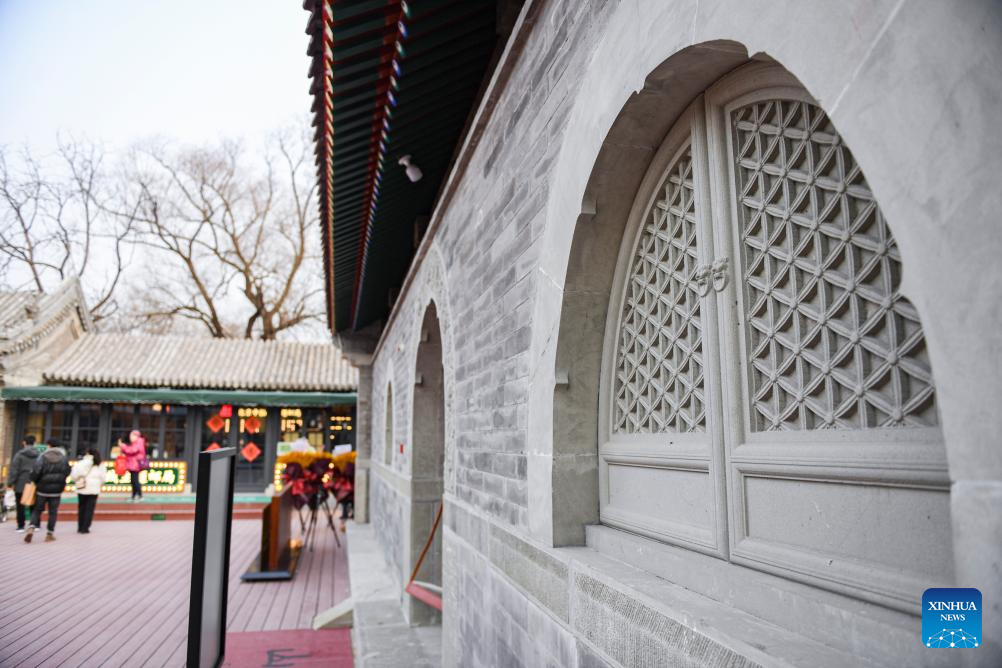
This photo taken on Jan. 18, 2024 shows a view of the Hong'en Temple in Beijing, capital of China. The over 700-year-old Hong'en Temple opened to public recently. It is located to the north of the Bell Tower in Beijing, with Beijing Central Axis passing through its west annex hall.
First created in the Yuan Dynasty (1271-1368), the Beijing Central Axis, or Zhongzhouxian, stretches 7.8 kilometers between the Yongding Gate in the south of the city and the Drum Tower and Bell Tower in the north. Most of the major old-city buildings of Beijing sit along this axis. (Xinhua/Chen Zhonghao)

This photo taken on Jan. 18, 2024 shows a Beijing Central Axis-themed post office at Hong'en Temple in Beijing, capital of China. The over 700-year-old Hong'en Temple opened to public recently. It is located to the north of the Bell Tower in Beijing, with Beijing Central Axis passing through its west annex hall.
First created in the Yuan Dynasty (1271-1368), the Beijing Central Axis, or Zhongzhouxian, stretches 7.8 kilometers between the Yongding Gate in the south of the city and the Drum Tower and Bell Tower in the north. Most of the major old-city buildings of Beijing sit along this axis. (Xinhua/Chen Zhonghao)
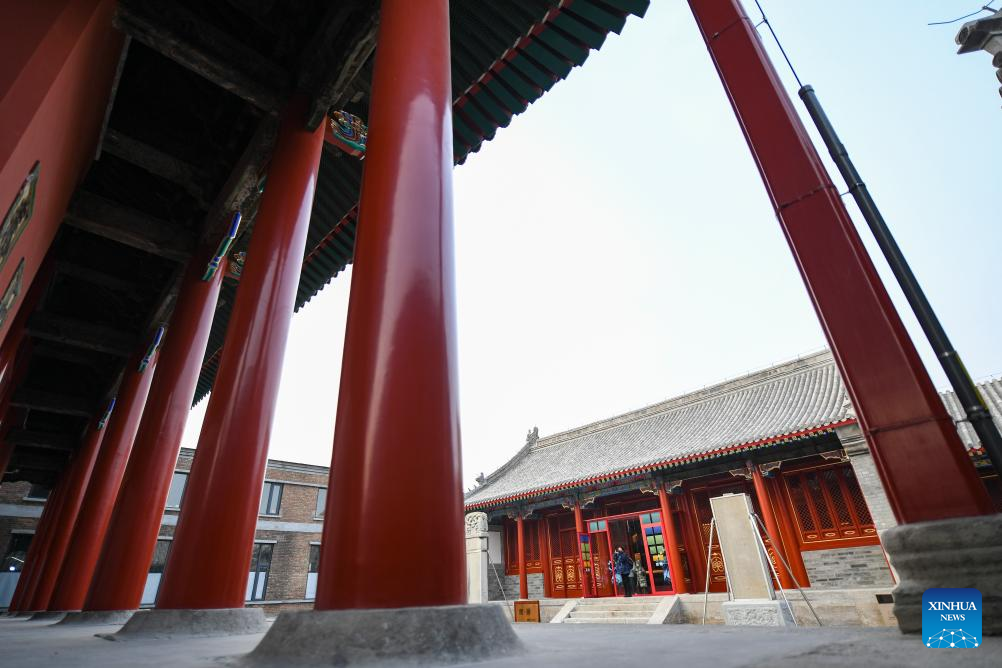
This photo taken on Jan. 18, 2024 shows a view of the Hong'en Temple in Beijing, capital of China. The over 700-year-old Hong'en Temple opened to public recently. It is located to the north of the Bell Tower in Beijing, with Beijing Central Axis passing through its west annex hall.
First created in the Yuan Dynasty (1271-1368), the Beijing Central Axis, or Zhongzhouxian, stretches 7.8 kilometers between the Yongding Gate in the south of the city and the Drum Tower and Bell Tower in the north. Most of the major old-city buildings of Beijing sit along this axis. (Xinhua/Chen Zhonghao)
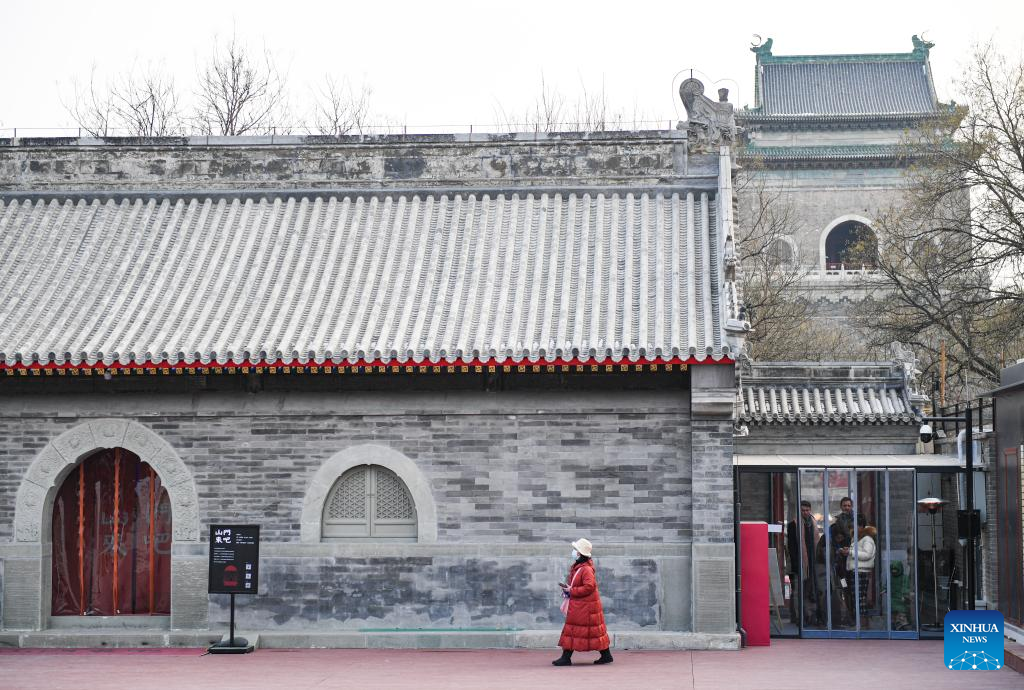
This photo taken on Jan. 18, 2024 shows a view of the Hong'en Temple (front) and the Bell Tower (rear) in Beijing, capital of China. The over 700-year-old Hong'en Temple opened to public recently. It is located to the north of the Bell Tower in Beijing, with Beijing Central Axis passing through its west annex hall.
First created in the Yuan Dynasty (1271-1368), the Beijing Central Axis, or Zhongzhouxian, stretches 7.8 kilometers between the Yongding Gate in the south of the city and the Drum Tower and Bell Tower in the north. Most of the major old-city buildings of Beijing sit along this axis. (Xinhua/Chen Zhonghao)
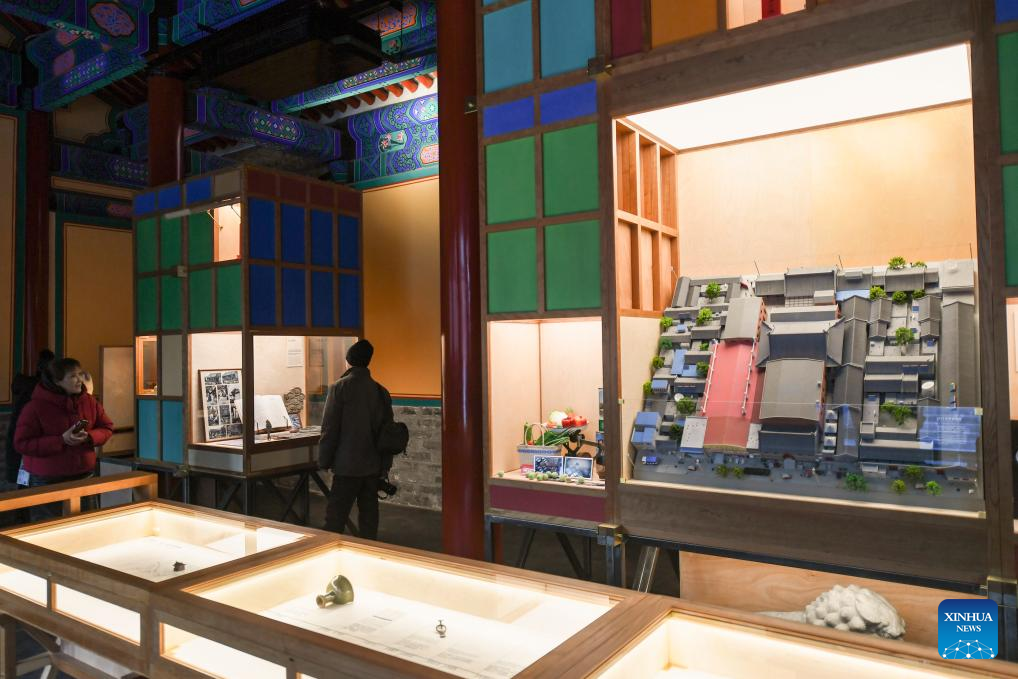
People visit an exhibition at Hong'en Temple in Beijing, capital of China, Jan. 18, 2024. The over 700-year-old Hong'en Temple opened to public recently. It is located to the north of the Bell Tower in Beijing, with Beijing Central Axis passing through its west annex hall.
First created in the Yuan Dynasty (1271-1368), the Beijing Central Axis, or Zhongzhouxian, stretches 7.8 kilometers between the Yongding Gate in the south of the city and the Drum Tower and Bell Tower in the north. Most of the major old-city buildings of Beijing sit along this axis. (Xinhua/Chen Zhonghao)

This photo taken on Jan. 18, 2024 shows a store where cultural products are on sale at the Hong'en Temple in Beijing, capital of China. The over 700-year-old Hong'en Temple opened to public recently. It is located to the north of the Bell Tower in Beijing, with Beijing Central Axis passing through its west annex hall.
First created in the Yuan Dynasty (1271-1368), the Beijing Central Axis, or Zhongzhouxian, stretches 7.8 kilometers between the Yongding Gate in the south of the city and the Drum Tower and Bell Tower in the north. Most of the major old-city buildings of Beijing sit along this axis. (Xinhua/Chen Zhonghao)
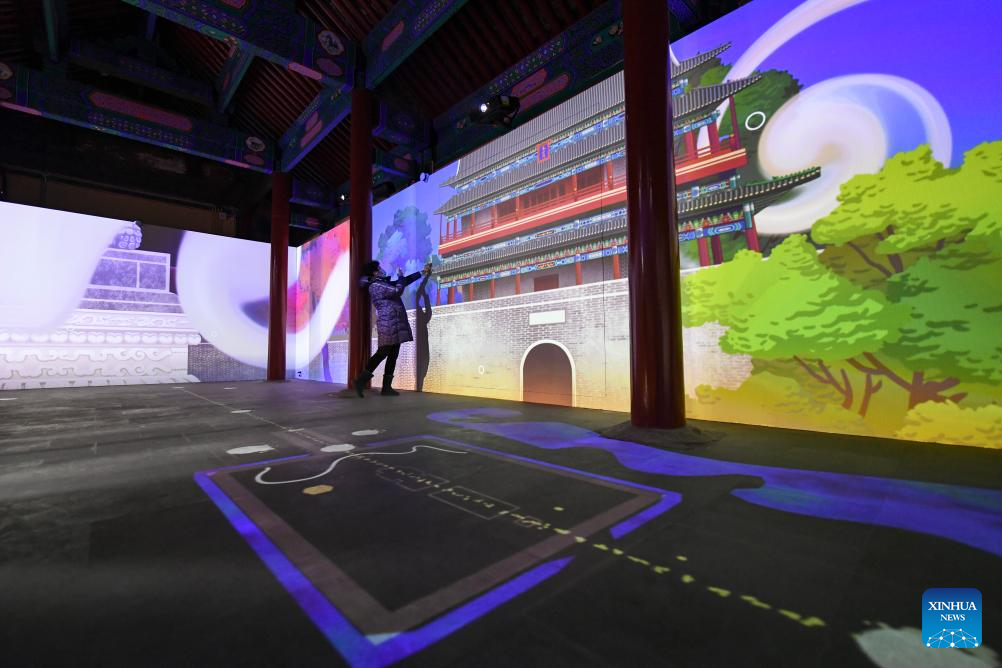
This photo taken on Jan. 18, 2024 shows a digital art hall at the Hong'en Temple in Beijing, capital of China. The over 700-year-old Hong'en Temple opened to public recently. It is located to the north of the Bell Tower in Beijing, with Beijing Central Axis passing through its west annex hall.
First created in the Yuan Dynasty (1271-1368), the Beijing Central Axis, or Zhongzhouxian, stretches 7.8 kilometers between the Yongding Gate in the south of the city and the Drum Tower and Bell Tower in the north. Most of the major old-city buildings of Beijing sit along this axis. (Xinhua/Chen Zhonghao)
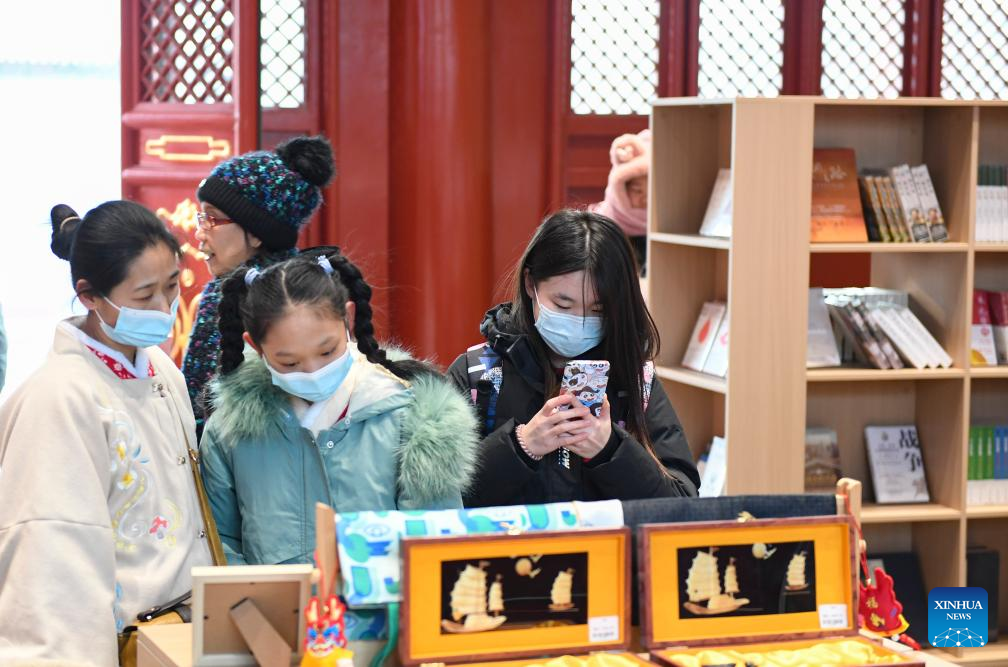
This photo taken on Jan. 18, 2024 shows a book store at the Hong'en Temple in Beijing, capital of China. The over 700-year-old Hong'en Temple opened to public recently. It is located to the north of the Bell Tower in Beijing, with Beijing Central Axis passing through its west annex hall.
First created in the Yuan Dynasty (1271-1368), the Beijing Central Axis, or Zhongzhouxian, stretches 7.8 kilometers between the Yongding Gate in the south of the city and the Drum Tower and Bell Tower in the north. Most of the major old-city buildings of Beijing sit along this axis. (Xinhua/Chen Zhonghao)
Photos
Related Stories
- Cradle of Civilization: Bingling Temple Grottoes
- Centuries-old temple in NW China to be digitalized
- Yunju Temple Stone Scripture Museum showcases profound traditional Chinese culture
- Buddhist temple in Beijing reopens after five-year renovation
- View of Mati Temple Grottoes
- Wanshou Temple ready to welcome visitors in Beijing
- World's loneliest temple
- Philae temples become landmark of Egypt's Aswan in "greatest archaeological rescue campaign"
- Over 6,000 people line up for Laba congee for good luck
- Four-day Chinese temple fair opens in Moscow
Copyright © 2024 People's Daily Online. All Rights Reserved.






